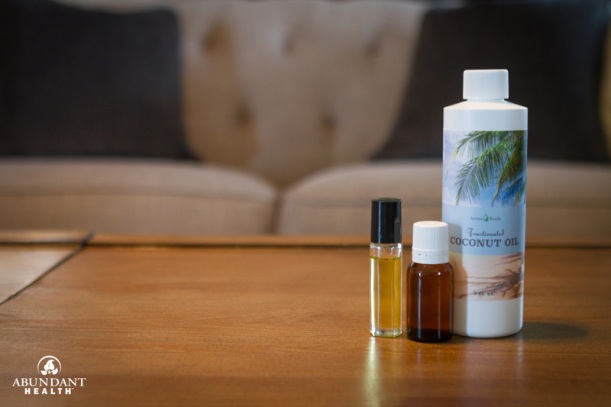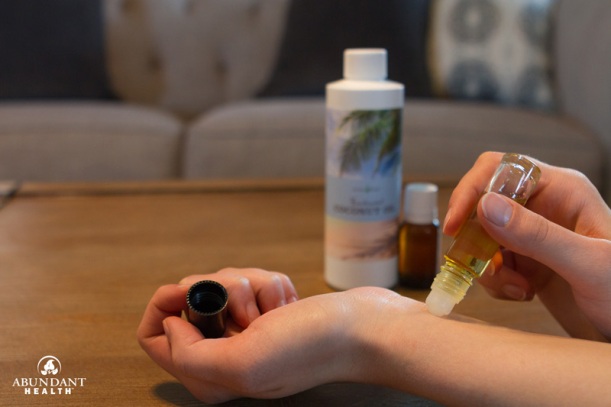We have been asked a lot about recommended dilution amounts when using essential oils. The amount of dilution needed depends largely on many different factors, such as the essential oil being used and whether or not the person is a child, has sensitive skin, is pregnant, is diabetic, or is dealing with epilepsy or high blood pressure. For detailed information on each essential oil, please see the Reference Guide for Essential Oils by Alan and Connie Higley, pp. 573–589. The information provided in this post consists of general tips and recommendations.

The information on this page is for educational purposes only. It is not meant to be used to diagnose, prescribe, or treat any disease, illness, or injury. Seek professional medical attention for any disease, illness, or injury.
First, it may be important to define a few terms.
Neat: This refers to the essential oil being applied without dilution.
Dilution: This refers to combining an essential oil with a carrier oil so that its effects are not so concentrated in one area.
Carrier Oil: A carrier oil is a vegetable oil derived from the fatty portion of a plant, usually from the seeds, kernels, or the nuts. Carrier oils are used to dilute and “carry” an essential oil into the skin during topical application.
Why should I dilute essential oils?
Since essential oils are really potent, and some oils may cause irritation, diluting the essential oil with a carrier oil is recommended. Children, pregnant women, and those with sensitive skin should always dilute essential oils. Diluting an essential oil in carrier oil is also a great way to help spread the essential oils over a larger area.
How do I dilute an essential oil?
To dilute an essential oil, simply mix the essential oil with the recommended amount of carrier oil. You can do this at the time of application by mixing the oils in the palm of your hand or in a small glass dish; or you can prepare a diluted essential oil mixture ahead of time and store it in a bottle. A roll-on bottle (or roller bottle) is useful for diluting an essential oil for topical application and applying essential oils easily to the skin. A dropper bottle can help you easily dilute essential oils to take internally by capsule.

What are the recommended dilution ratios?
In general, many essential oils can be used neat, but some do require dilution. For most adults, a 1:1 or 1:2 ratio (essential oil drop:carrier oil drop) is a good rule of thumb for most oils. For “hot” oils, such as cassia, cinnamon, clove, oregano, thyme, lemongrass, or lemon myrtle, the recommended dilution ratio is 1:4.
For children, pregnant women, or those with sensitive skin, we recommend diluting 1 drop of essential oil in 1–3 tsp. of carrier oil.
What are good carrier oils to dilute an essential oil with?
Some great carrier oils for diluting essential oils include Almond Oil, Fractionated Coconut Oil, Jojoba Oil, Coconut Oil, and olive oil.
Fractionated Coconut Oil (FCO) is a common carrier oil because it is clear, odorless, and absorbs easily into the skin.
You can also use a dilution stick like this one to rub onto the skin before applying the essential oils.

What do I do if I get a reaction on my skin from an essential oil?
If a rash develops or you feel a burning sensation after applying essential oils, you may not have diluted the oil enough. To help relieve the pain, simply apply more carrier oil to the area. It is important to note that water will not help relieve the pain but may actually increase it, because water will drive the oils deeper into the tissue.
What do I do if I get essential oils in my eyes or other sensitive areas?
First, DO NOT try using water to wash the oils out. Water and oil do not mix, and the water will actually drive the oils deeper. If you get oils in your eyes, wash your eyes with a little carrier oil such as coconut oil. If oils come in contact with other sensitive areas of the body, apply carrier oil to the area to help dilute the essential oils.
What does photosensitive mean?
Using some oils, such as lemon, orange, grapefruit, mandarin, bergamot, angelica, etc., before or during exposure to direct sunlight or UV rays (tanning beds, etc.) may cause a rash, pigmentation, or even severe burns. These oils are designated as photosensitive, and care should be taken after applying these oils on the skin to protect the skin from direct, prolonged ultraviolet light exposure for 1–3 days.
Source: Reference Guide for Essential Oils by Connie and Alan Higley
This information has been designed to help educate the reader in regard to the subject matter covered. This information is provided with the understanding that the publisher, the authors, and Abundant Health™, LLC, are not liable for the misconception or misuse of the information provided. It is not provided in order to diagnose, prescribe, or treat any disease, illness, or injured condition of the body. The authors, publisher, and Abundant Health™, LLC, shall have neither liability nor responsibility to any person or entity with respect to any loss, damage, or injury caused or alleged to be caused, directly or indirectly, by this information. The information presented is in no way intended as a substitute for medical counseling. Anyone suffering from any disease, illness, or injury should consult a qualified health care professional.

